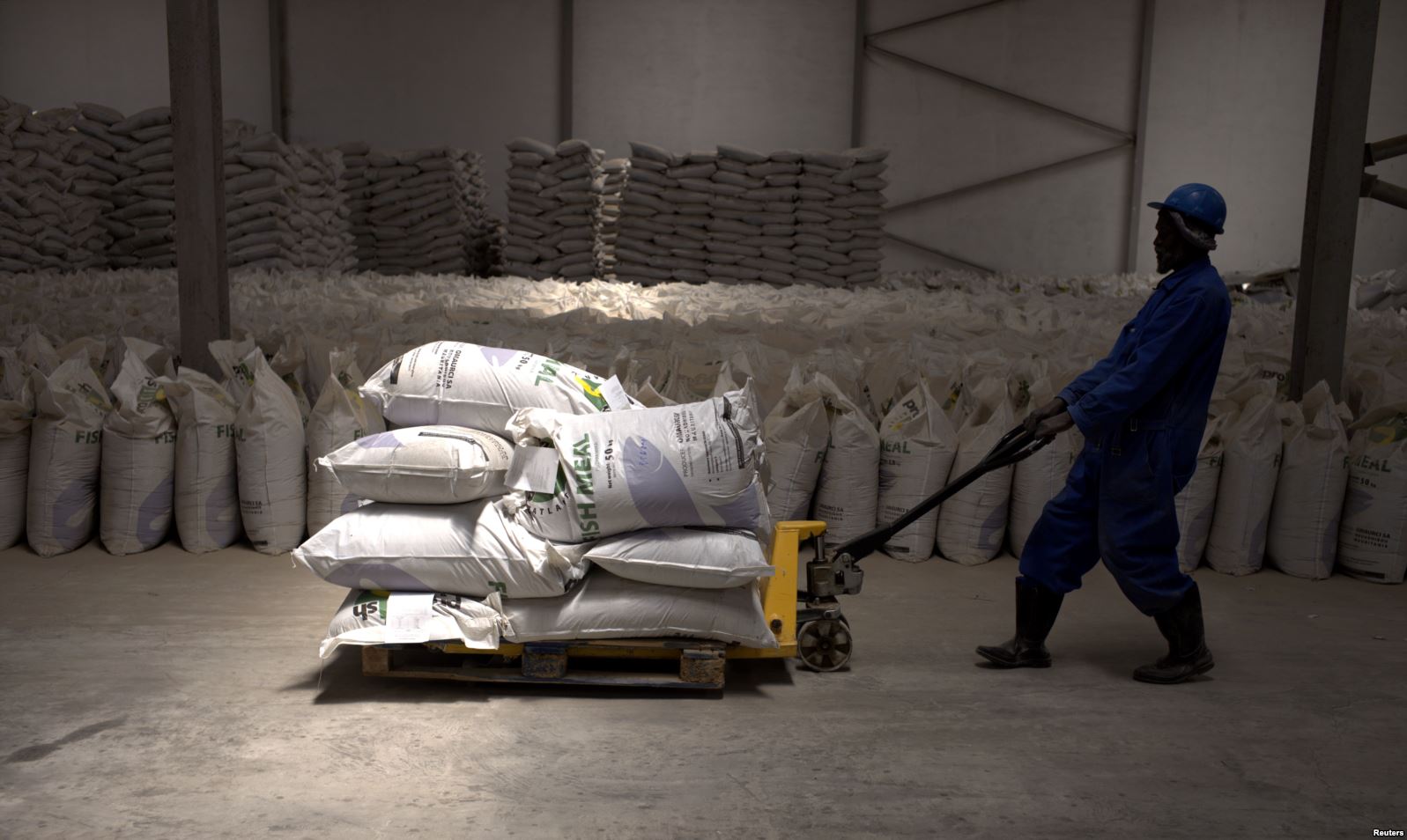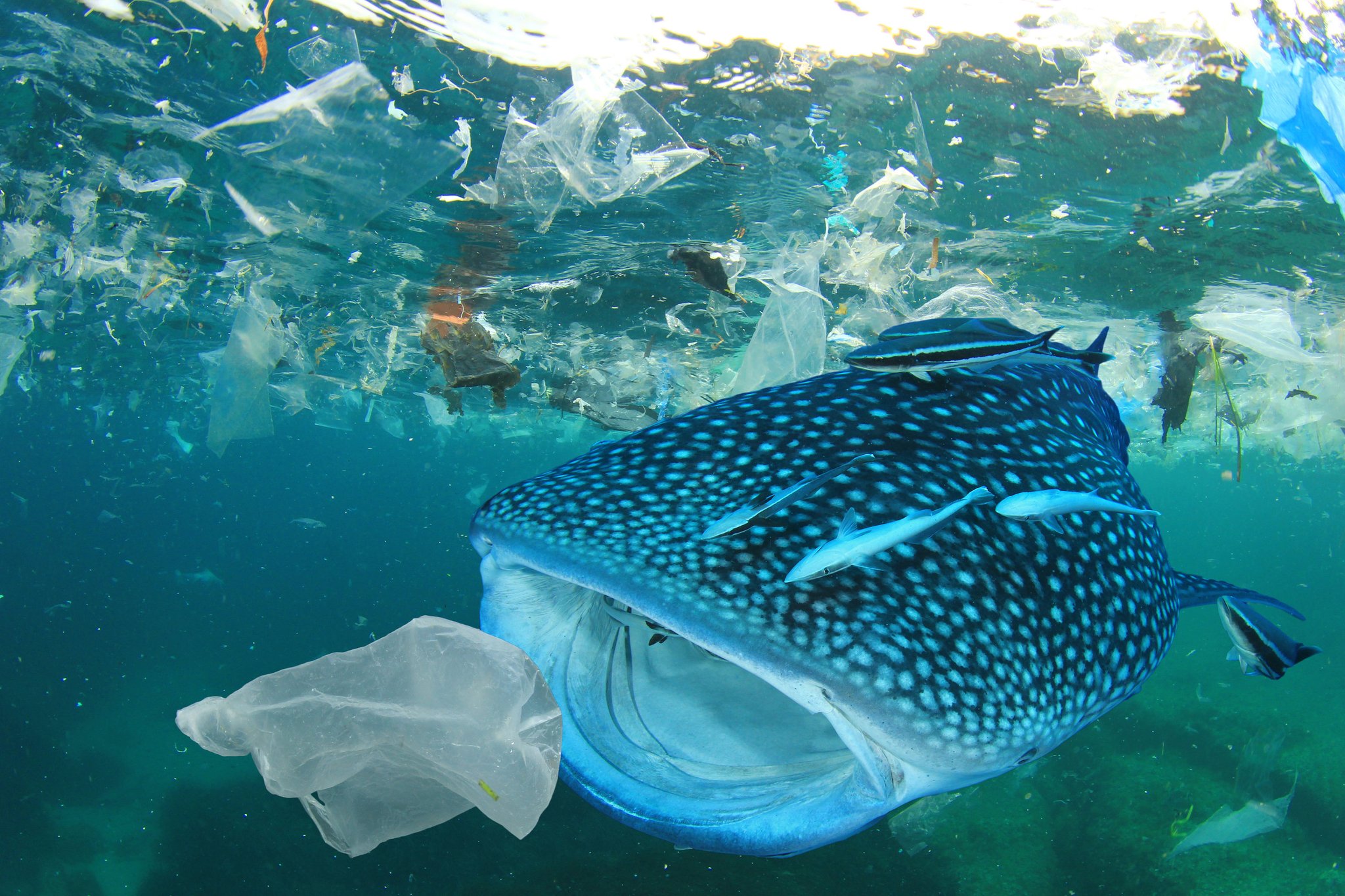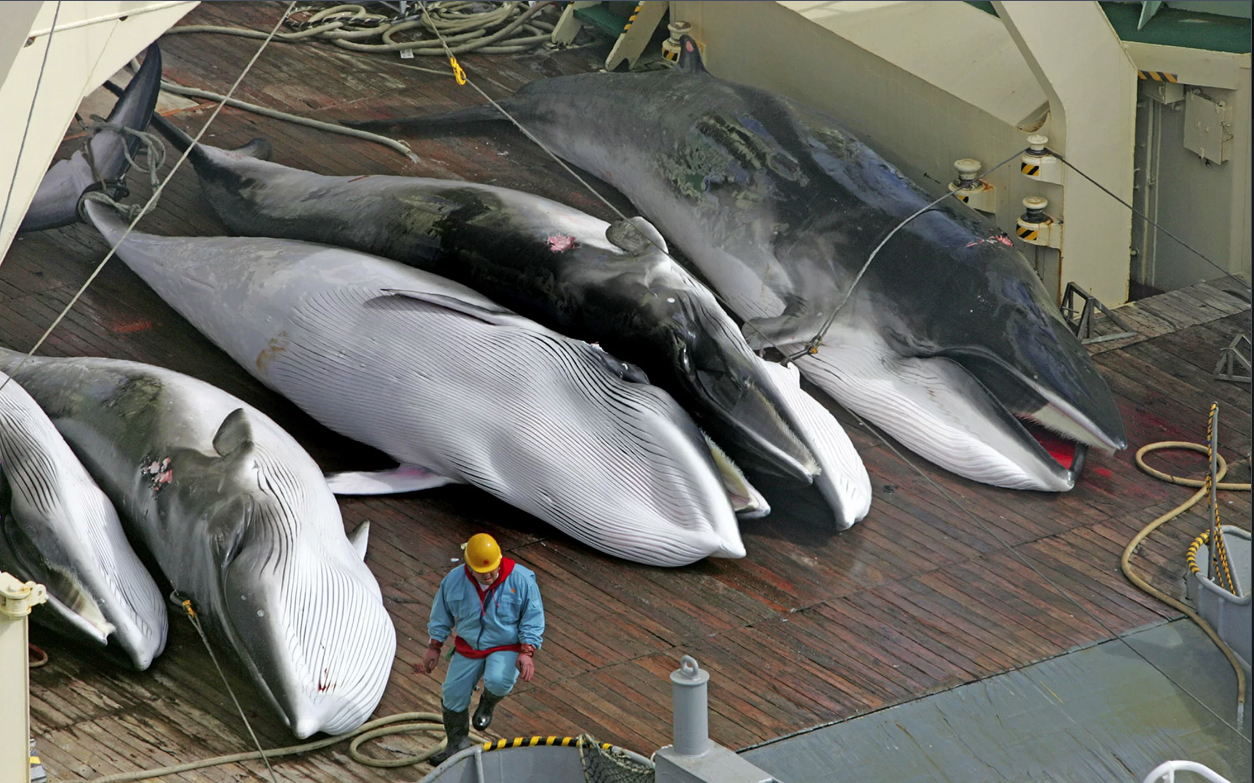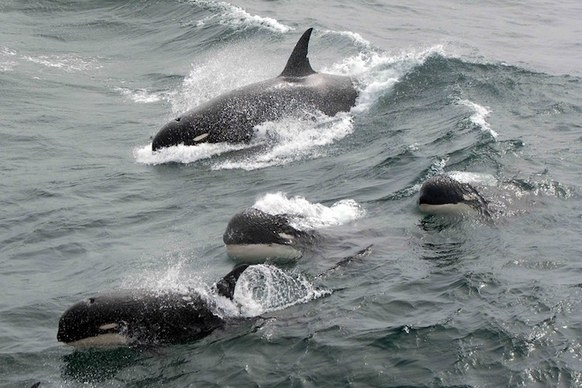Six-year-old Reto Aisaka was jumping up and down on the windswept dock. For five months, he’d been counting the days until his dad, Toru, returned from a whale hunt with whale meat. The boy was up at dawn to meet him.
Shimonoseki, on the westernmost tip of Japan’s main island of Honshu, celebrated the return of its small whaling fleet late last month. The mother ship, Nisshin Maru, carried the meat from 333 Antarctic minke whales. But it was a celebration that masked deep uncertainty about the future of Japan’s whaling industry.
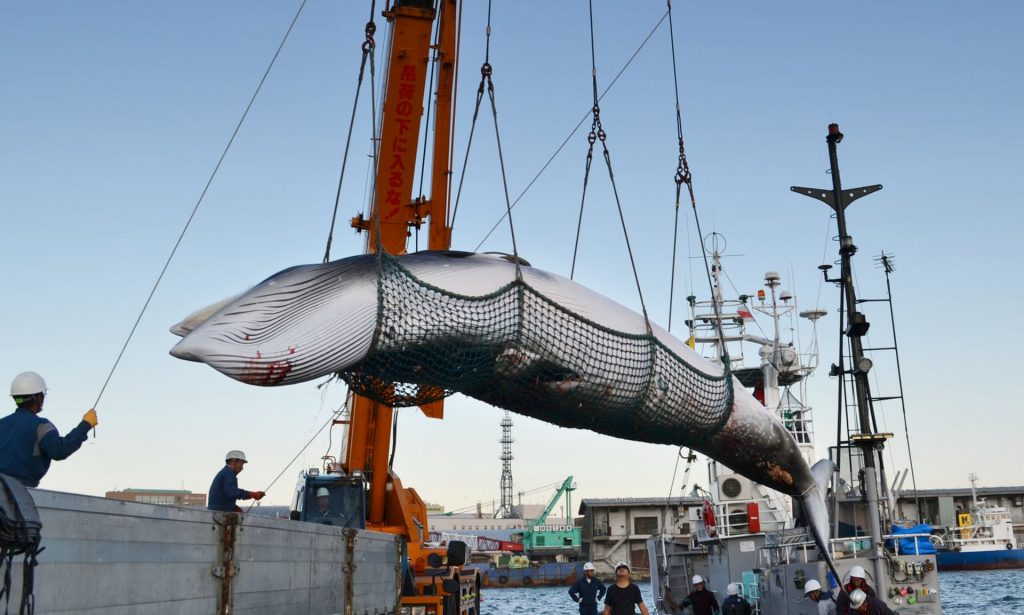
The whales were taken under the guise of “research” - a designation that has kept Japan’s whaling industry alive despite a three-decade moratorium on commercial whaling. These were the last Japanese whalers to return from the rich waters of Antarctica’s Southern Ocean.
In December, Japan dropped the cover of “research.” It left the International Whaling Commission and announced plans to resume commercial whaling.
The news, though, came with an important caveat: Japan would no longer hunt whales in international waters, including in the Antarctic. Its fleet would be confined to the island nation’s own waters, up to 200 miles offshore, where whales are less plentiful.
“This city has a long history of whaling in the Antarctic,” said Mitsuhiro Kishimoto, a researcher at Shimonoseki City University. “It’s as if one big chapter of our history has closed.”
Whale added to school lunch programme
Japan’s decision to resume commercial whaling was widely seen as thumbing its nose at world opinion - and an attempt to maintain the waning tradition of eating whale meat.
But it’s also a step into the unknown. With costs high and demand low, many experts wonder whether commercial whaling is economically sustainable.

There are also serious questions about the ethics and optics of continued whaling in an age of increased activism over ocean ecosystems because of climate change, pollution and other worries.
At a dockside ceremony, Shimonoseki’s mayor, Shintaro Maeda, called the resumption of commercial whaling “our long-cherished wish” and tried to paint a rosy picture to an audience of officials, crew members and industry bigwigs.
“We will launch a new program to promote Shimonoseki as the ‘city of whales,’ ” said Maeda, vowing to expand a school lunch programme to 100,000 servings of whale meat a year, to pass the culture on to the next generation.
But when the news of Japan’s decision broke on board the Nisshin Maru, the crew reacted with “anxiety” and “worry,” according to Reto’s father, Toru.
In the city, Junko Kojima runs the small Kujirakan, or Whale House, restaurant, the only eatery here still specializing in whale meat: fried, boiled, even whale sashimi. (The tail is the sweetest part, she says.)
She took over after the death of her father, a former newspaperman who was determined to keep the “torch” of whaling alight in the town.
“Whale meat from the Antarctic has always been appreciated,” she said, concerned about whether meat from closer to home will be as sought after.
Eating at the restaurant’s narrow counter, 62-year-old businessman Nori Sakura - a customer for 20 years - said whale meat is a personal “treat.”
“When I am in the mood for sake [rice wine], when I have a little money to spend,” he said.
But Sakura is in a minority in modern Japan. Its people now consume an average of less than 1.4 ounces of whale meat a year, according to official data. Few young people eat any.
‘Broken promises’
Japan’s decision to leave the International Whaling Commission came after years of frustration. Japan argues the group failed to honor its dual mandate to find a balance between preserving whale stocks and allowing the “orderly development” of the industry. It says the group also broke a promise made when the moratorium was agreed to in 1982 to review the ban if whale stocks recover.
And as stocks of many whales have indeed recovered, the IWC’s own Scientific Committee calculated theoretical catch limits it believes to be sustainable.
Japan says it will respect those limits when it hunts for common minke, sei and Bryde’s whales, each believed to number more than 20,000 in the western North Pacific.
Those numbers, though, are small compared with the population of Antarctic minke, thought to number more than 500,000.
“The irony is that they are going to take a few whales now from a more confined stock - while the whales they were taking from the Southern Ocean, from a stock that is incredibly robust, probably one of the most robust whale stocks on the planet, the Southern Ocean minke whale, never made any difference,” said Peter Bridgewater, an Australian who served as IWC chairman from 1995 to 1997.
Bridgewater says he is not surprised Japan withdrew from the IWC, describing the world body as a “dialogue of the deaf.”
“If we were catching whales that were facing extinction, we would deserve to be criticized,” said Nobuo Abe, captain of whale catcher Yushin Maru No. 3, who has been hunting whales in the Antarctic for three decades. “But if we follow a plan approved by the Scientific Committee, all we hear is criticism that whaling is inhumane and the way we catch whales is bad.”
In 2014, the International Court of Justice ruled that Japan did not need to kill Antarctic whales “for purposes of scientific research.”
The 8,145-ton vessel Nisshin Maru, where whale meat is processed by the crew during long ocean trips, is more than 30 years old and needs to be replaced soon. A 2012 poll commissioned by the International Fund for Animal Welfare found taxpayers overwhelmingly didn’t want to fund a replacement.
Japan subsidized whaling “research” to the tune of nearly $10 million a year, IFAW says. Now, Shigeki Takaya, the director of the Whaling Affairs Office at Japan’s Fisheries Agency, said subsidies will still be paid for at least three years to “smooth the transition” to commercial whaling and give the industry “a leg up.” But whether the government will have an appetite for continued subsidies is unclear.
Deep roots
Whale hunting has roots in Japanese culture dating back thousands of years, evidenced by the songs of the indigenous Ainu people, and the dolphin and whale bones found at archaeological sites.
A visiting German doctor recorded the widespread consumption of whale meat, blubber and internal organs in 1823, as well as its use to purportedly cure constipation, scabies and more.
The Nagato City Whale Museum displays the handheld harpoons, knives and saws used by traditional whalers - men in narrow boats who used nets to trap abundant passing whales - from the 17th century onward.
Japan’s whaling industry expanded rapidly under the Allied occupation led by Gen. Douglas MacArthur, when whale meat was promoted as an important source of protein after World War II.
Traditional whaling died out in Nagato at the turn of the 20th century, thanks to overfishing and the advent of modern “Norwegian-style” methods, with powerful harpoon guns aboard large, fast ships, and the United States, Europe and Russia gutting whale populations in the North Pacific.
Outside the museum, a tomb erected to the fetuses of whales killed in ancient hunts reflects the respect these fishermen had for the animals they hunted, based on Shinto and Buddhist beliefs.
Today, it is not so much the needs of local communities that are sustaining Japan’s modern whaling industry as it is a combination of nationalist politics and a defensive reaction to the West’s denunciations of Japan’s “brutal” and “barbaric” whaling industry.
There’s also a belief that people who eat cows, lambs and pigs, often imprisoning them in appalling conditions under factory farming, are being hypocritical
“If vegans say we are cruel and barbaric, they may have the right,” said Kiyoshi Ejima, a parliamentarian for Prime Minister Shinzo Abe’s ruling Liberal Democratic Party and a former mayor of Shimonoseki. “But if those people who eat other kinds of meat criticize us, they sound self-righteous.”
Japan’s defense of its whaling industry is also rooted in the right-wing nationalism of Abe’s political base, a last gesture of defiance at a world that has forced them, as they see it, to constantly apologize for their past.

Capt. Paul Watson of the Sea Shepherd Conservation Society, which fought a decades-long battle with the Nisshin Maru, said Japan’s decision means there will be no more whale hunting in the Southern Hemisphere.
That, he says, is a victory for his organization, after it pushed up the costs of Japanese whaling by forcing the government to spend tens of millions of dollars on security, including military-style radar, to evade his ship.
But for many in Japan, the confrontational rhetoric of some Western activists not only plays into the views of the nationalist fringe but also alienates ordinary people.
A January survey by state broadcaster NHK showed 52 percent of people thought Japan’s decision to withdraw from the IWC was either good or very good, while 37 percent opposed it.
“There aren’t many real supporters of Japanese whaling,” said Tetsuji Ida, one of Japan’s leading environmental reporters. “The support is created by Western criticism. People are just anti-anti-whaling. It also gets very nationalistic, and that’s good for Prime Minister Abe.”
Even in Japan, some experts say the nation should stop trying to support a dying industry that tars its global reputation. But Megumi Sasaki, who made a 2016 documentary about whale and dolphin hunting, says the West needs to make more of an effort to respect Japanese culture.
“We talk about diversity, but is this diversity if you don’t accept another culture’s different relationship with animals and nature?” she asked.
Source: NZherald.co.nz

